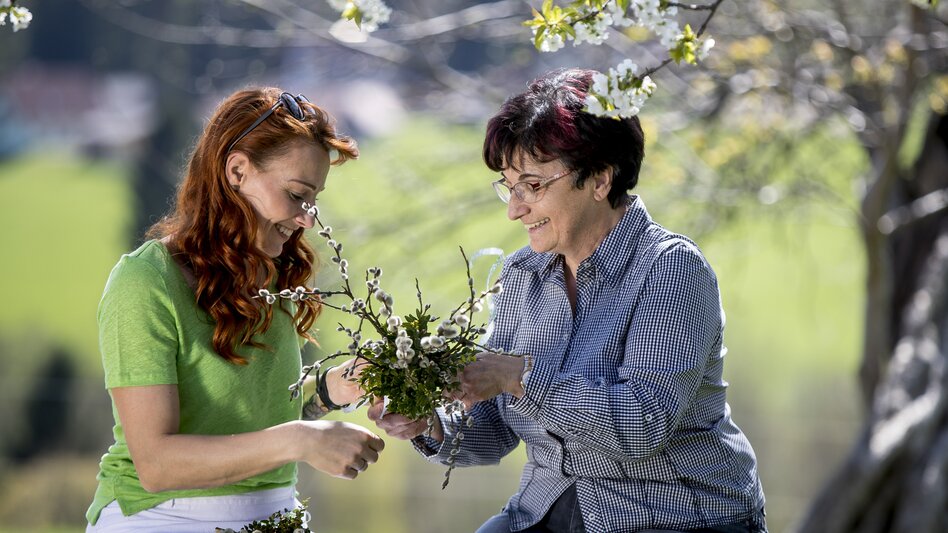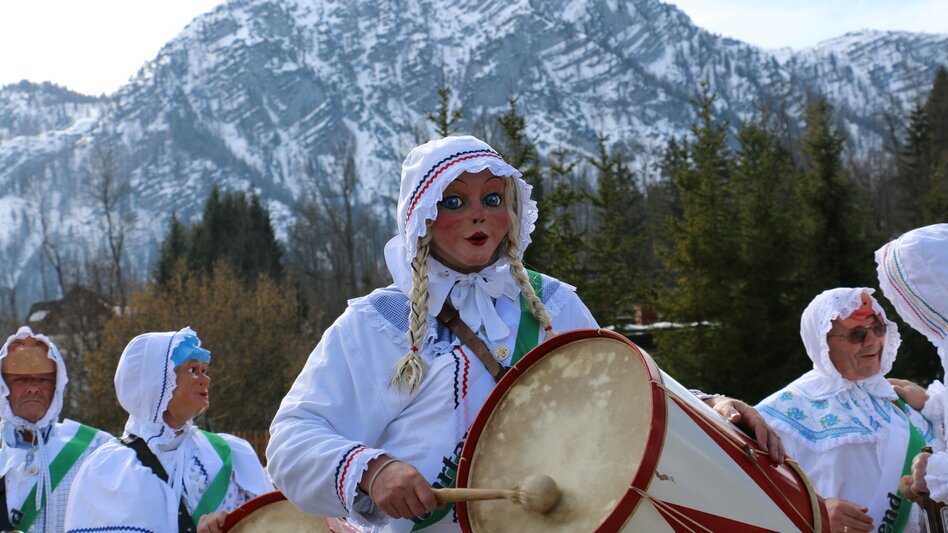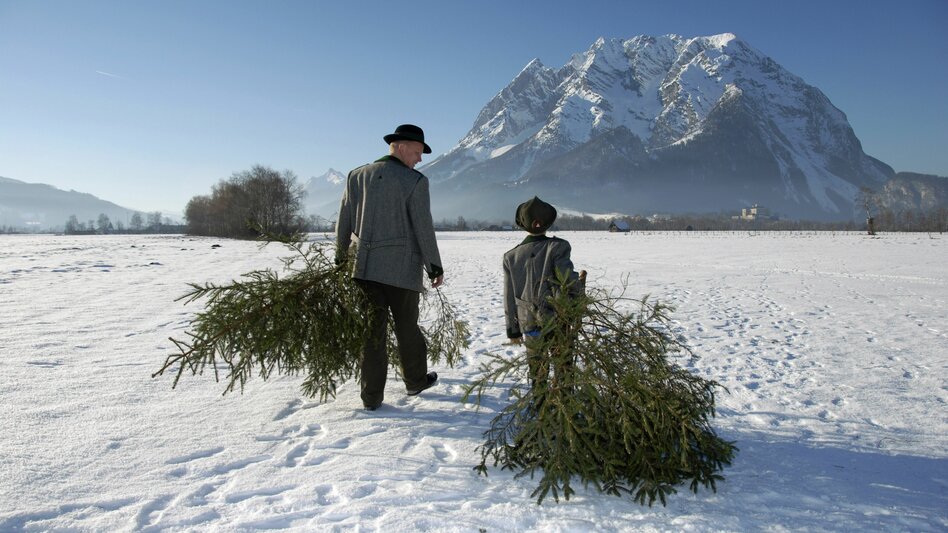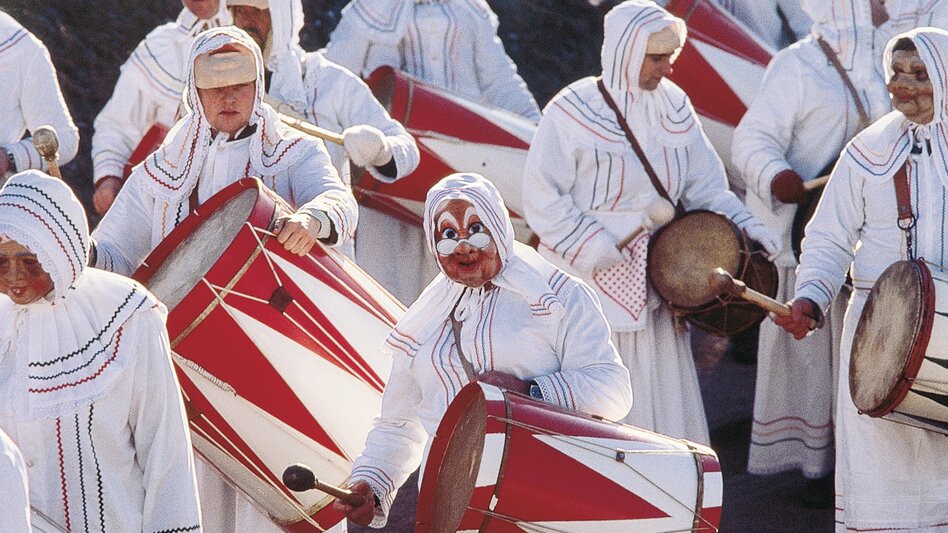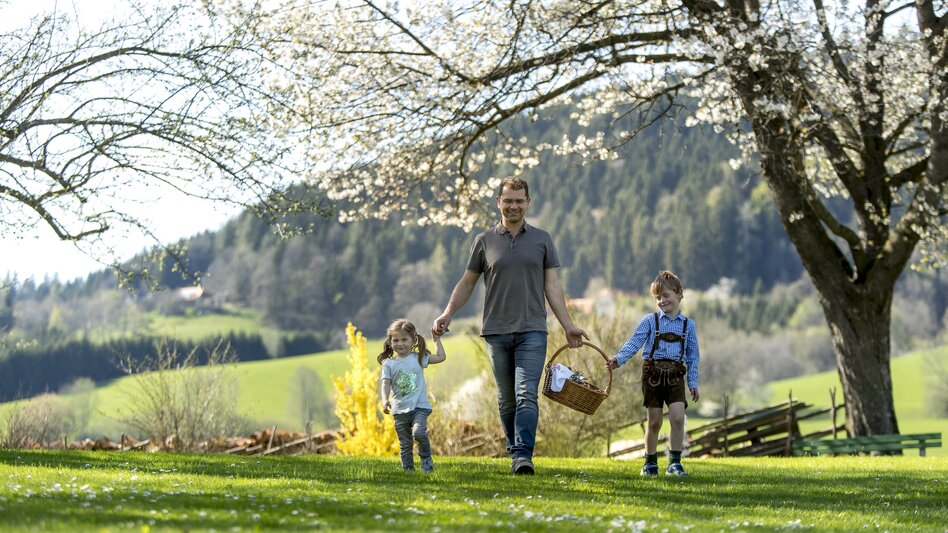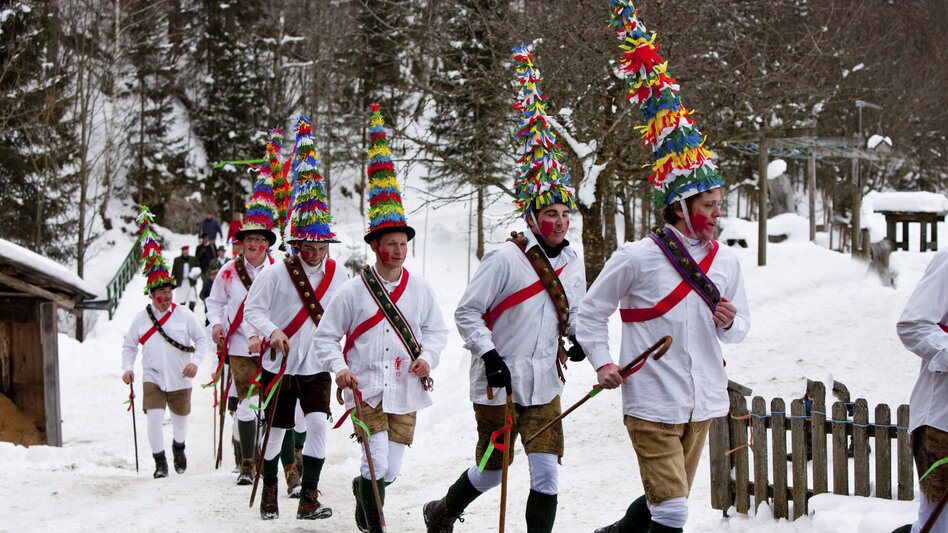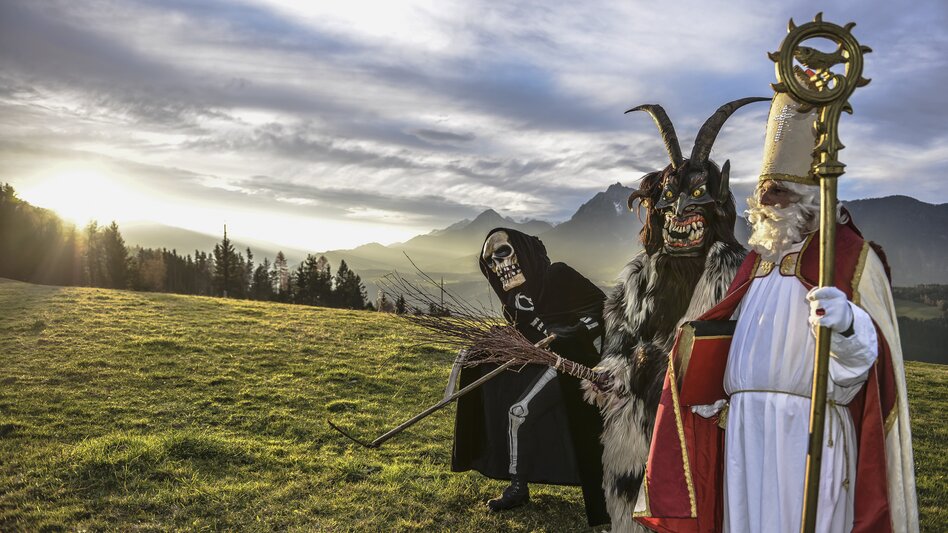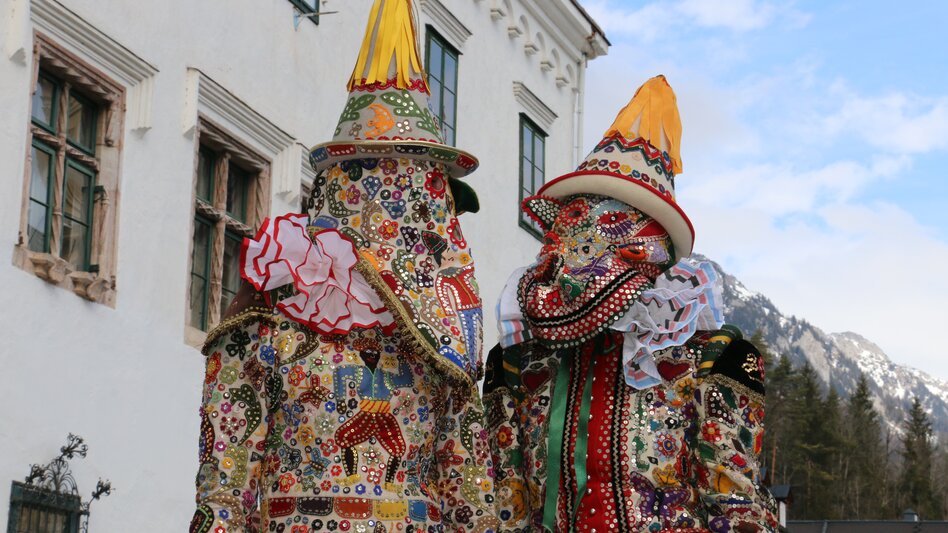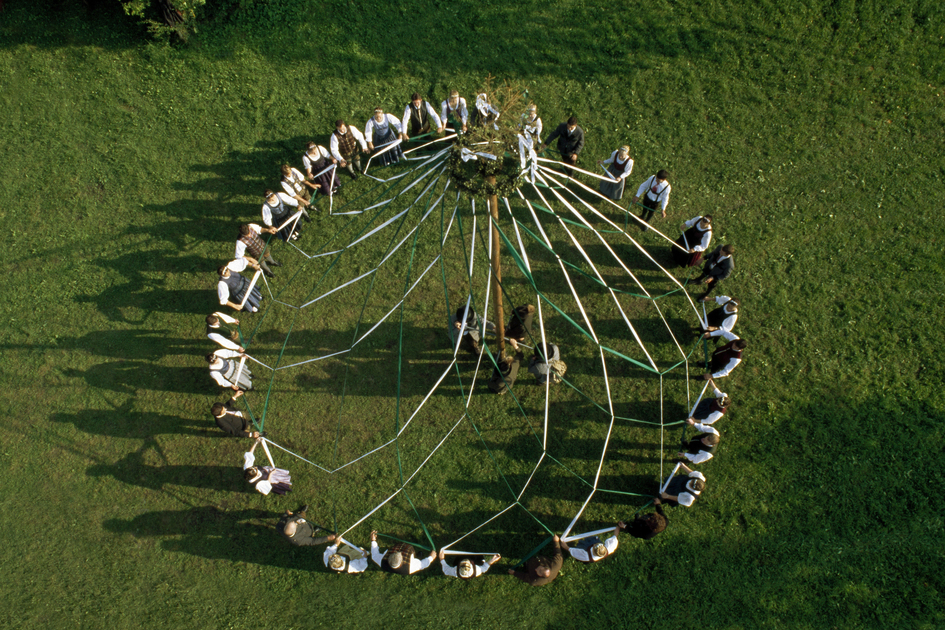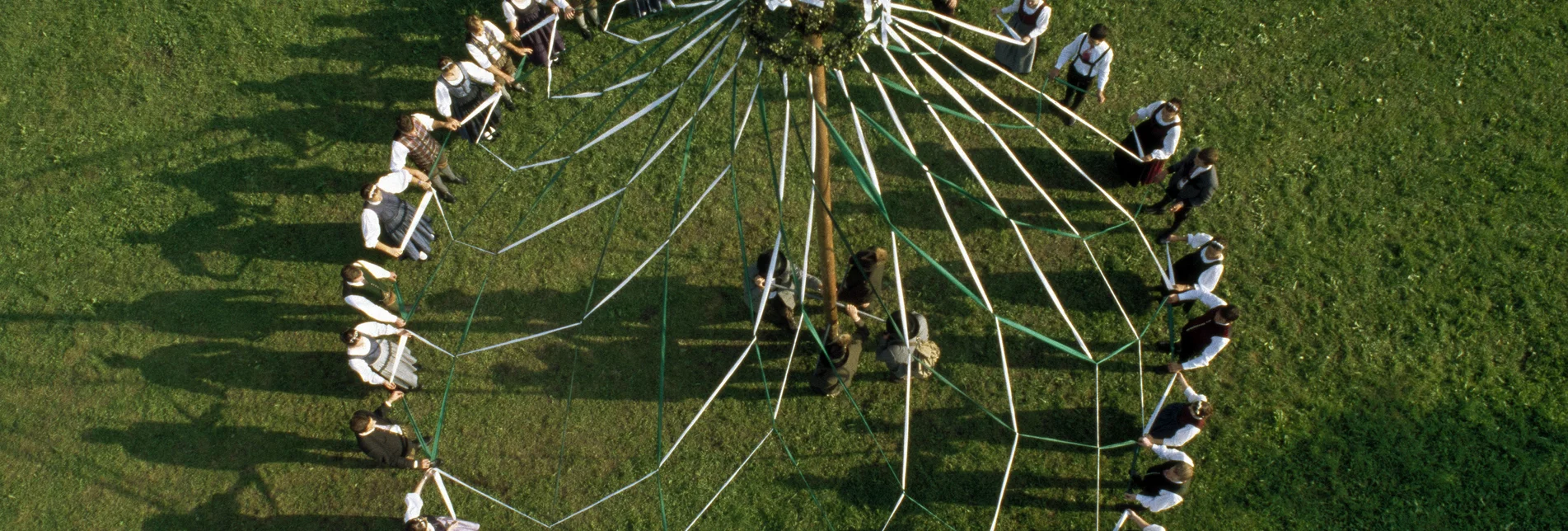

Seasonal customs in Styria
Customs mark meaningful periods throughout the course of the year. They are rites of passage between the different seasons, which are often welcomed or bid farewell with festivities.
For many centuries, customs have created an incomparable sense of belonging and community – and the same is true in the eleven regions of Styria.
Important dates in the calendar of customs
Customs throughout the annual cycle
In spring, the arrival of the warm season is celebrated with various customs at Easter and Whitsun or during the raising of the Maypole. The custom of Samsontragen is one of the traditional highlights in summer. Autumnal harvest festivals focus on the value of regional products. And in winter, New Year's and carnival customs take centre stage – alongside Advent and Christmas, of course.
By the way: Anyone who claims that customs always have to be centuries old might have to think again. The daffodil festival, for example, is proof that this isn't necessarily the case. Even if this custom can only look back on a short tradition, it already enjoys great popularity.
Contemplative and atmospheric
Advent and Christmas
From colourfully decorated Advent wreaths to traditional festivities and tempting Christmas biskuits: Preparations for the Christmas season are an important part of Styria's heritage. Handicrafts, baking and singing all shorten the wait for the holidays, which are typically spent surrounded by family.
Every year on 5 December, Saint Nicholas brings presents for the children. He is accompanied by scary figures, the Krampuses, who can be marvelled at during the regional Krampus runs.
The Öblarn Krampus Play is one of the last Styrian folk plays and has been declared an intangible cultural heritage by the UNESCO. It takes place in rural homesteads and as a public performance on the market square. Figures such as the hunter, Lucifer and his entourage, the blacksmith and "Habergoas" (a demon figure in the shape of a goat with horse hooves) are portrayed by amateurs. Original texts from the 18th century are recited.
Nativity scenes, candles, apples and nuts are part of every Christmas festivity on 24 and 25 December. And so are traditional straw stars and the Christmas tree, which has been a custom in Styria since the 19th century. The Nativity scene, which depicts the birth of Jesus, goes back to Francis of Assisi.
Christmas lights in the cities and towns, Advent events at the open-air museum in Stübing or cosy winter hikes such as the Christmettenwanderung in Peter Rosegger's homeland: In winter, you can look forward to a variety of unforgettable moments in Styria!
Tip: Fans of arts and crafts can put their creativity to the test at regional workshops on Advent wreath-making, painting Christmas tree baubles or making lanterns. Those wanting to buy Styrian handicrafts as a souvenir will find what they are looking for at the local Advent markets.
Sources:
Robert Pauritsch, Norbert Adam: Brauchtum in der Steiermark. Feste, Bräuche, Rezepte. Styria Verlag 2007.
Waltraud Ferrari: Alte Bräuche neu erleben. Fest- und Alltag im Rhythmus der Jahreszeiten. Leopold Stocker Verlag 2014.
A truly happy New Year
New Year's Eve and New Year's Day
Did you know that the dazzling fireworks as a New Year's Eve tradition have their roots in pre-Christian customs? Even the Germanic tribes welcomed the turn of the year with noise and ruckus to drive evil spirits away. Today, people wish each other luck – with symbols such as chimney sweep figures, small horseshoes, coins and shamrocks. Many lucky charms are made by hand and gifted to loved ones.
Interesting fact: Horseshoes have to be hung with the ends facing upwards so that the luck they catch cannot fall out. Four-leaf clovers bring luck not only because of their rarity but also because of the cross symbolism.
In Graz, the Capital of Culture and Culinary Delights, as well as in smaller towns in the various regions, the turn of the year is celebrated glamorously at a variety of events. The highlights include traditional New Year's Eve torchlit walks in rural areas, for instance, in Bad Gleichenberg.
Source:
Robert Pauritsch, Norbert Adam: Brauchtum in der Steiermark. Feste, Bräuche, Rezepte. Styria Verlag 2007.
Carnival
When you think of carnival, the first thing that comes to mind are delicious, fresh carnival doughnuts? And yet, Styria has a lot more to offer in regard to beloved carnival traditions – from old customs to modern processions. An old fertility rite, for instance, is the "Blochziehen" where a tree trunk is pulled through the village, today usually by a tractor.
The carnival procession on Shrove Monday is one of the oldest customs in the Murau region. The Schellfaschingsgruppe and the Rossgruppe gather for a circle dance on the village square and then parade from house to house.
Another insider's tip is the carnival in the Ausseerland region with Flinserl, Pless and Maschkera. The latter generally refers to masked figures who dance in the streets while playing tricks on people and fooling around. Since 1767, the Trommelweiber have been parading the streets in white robes while drumming loudly.
The so-called Beigl is carried along as a Lenten pastry. During the Beiglreißen, two people try to tear the pastry apart in order to get the larger piece for themselves. In addition to the traditional carnival doughnuts, the rarer elongated Stanglkrapfen are a favourite during carnival season as well.
On Shrove Tuesday, the friendly and cheerful Flinserl make their grand appearance: Dressed in colourful handmade garments, they throw nuts to children. The Pless represent winter. They wear old white clothes and carry a beehive on their heads and a stick with a wet cloth in their hands. All those who don't want to risk getting wet should beware when they hear them shout "Pless, Pless, ...".
Source:
Robert Pauritsch, Norbert Adam: Brauchtum in der Steiermark. Feste, Bräuche, Rezepte. Styria Verlag 2007.
From palm bushes to Easter eggs
Easter
The Christian holidays around Easter are characterised by regional customs as well. Artistic Easter exhibitions, numerous events and culinary traditions make Easter in Styria something very special.
Spring and Easter are ushered in with Lent, which lasts until Easter Saturday. On the last Sunday before Easter, Palm Sunday, the palms are traditionally consecrated: The palm bouquets decorated with colourful ribbons are carried to church, usually by children. Palm willow and boxwood twigs are often included. In any case, the consecrated palm bouquets symbolise vitality.
During Holy Week, which follows Palm Sunday, the so-called Ratschen takes centre stage. It is a UNESCO Intangible Cultural Heritage and probably originated in the 18th century at the latest. The sound of the wooden ratchet replaces the ringing of the church bells from Maundy Thursday to Easter Sunday. Until Holy Saturday, children and young people walk around collecting sweets or coins.
Holy Saturday is all about fire. Local youngsters carry fires to ward off harm and to provide light and warmth for the house. But then there are also the traditional Easter bonfires that symbolise the end of the old and beginning of the new.
What else can't be missing at Easter? The Easter eggs, of course! On Easter Sunday, children go on a hunt for them in the meadows. The (chocolate) eggs represent fertility and vitality. And since Easter Sunday also means it's the end of Lent, plenty of dancing and celebrating take place. Numerous Easter festivals and Easter markets in the cities and in the countryside enchant visitors from near and far.
Sources:
Robert Pauritsch, Norbert Adam: Brauchtum in der Steiermark. Feste, Bräuche, Rezepte. Styria Verlag 2007.
Waltraud Ferrari: Alte Bräuche neu erleben. Fest- und Alltag im Rhythmus der Jahreszeiten. Leopold Stocker Verlag 2014.
Michael J. Greger: Brauch und Jahr. Neue und überlieferte Bräuche im Bezirk Liezen. Verein Schloss Trautenfels 2008.
Traditional highlights in ...
- ... spring: Whitsun stealing, maypole raising, daffodil festival and the Southwest Styrian flower carpets
- ... summer: Solstice Festival, Klapotetz, the UNESCO Intangible Cultural Heritage of Samsontragen and modern event programmes revolving around Cultural Enjoyment Outdoors
- ... autumn: Almabtrieb (driving down the cattle from the pastures and decorating the animals) as well as the harvest festival
- ... winter: Advent, the UNESCO Intangible Cultural Heritage of the Öblarn Krampus Play, the twelve nights after Christmas, Krampus and Perchten runs as well as carnival
